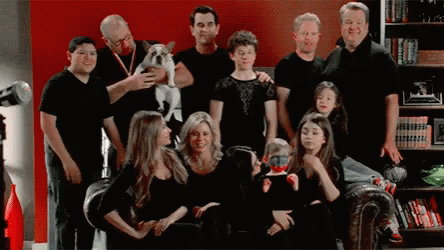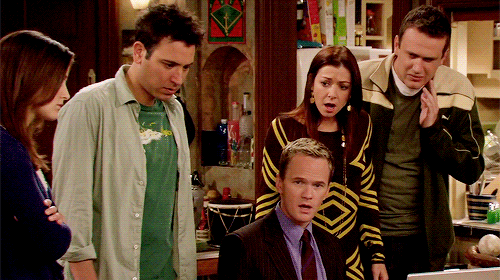I guess I have to take another break from binge-watching Netflix to write this blog. Although, I think I’m having fun revisiting some nice memories of the shows I have already talked about or I will talk about in upcoming posts. Today, I won’t necessarily go down one specific memory lane to focus on one specific show. Instead, I am going to focus on a generalization of how sitcoms have revolved certain character dynamics.
Throughout the evolutionary themes of sitcoms, we can notice two simple styles of characters. They generally revolve around either a tight-knit group of friends or a family, generally, with the stereotypical number of members. In the early rise of sitcoms on television, there was greater focus on family dynamics. More conservative ideologies of what would be aired were incorporated into the writings of the show. This usually forced writers to focus on families in their show, so it would seem more family friendly. Furthermore, once a template of what a family sitcom is was established, other writers would “copy” similar elements. This was the first revolution of trends in the genre. Shows would include families that had parents that loved each other, but would have the general argument in a comedic manner. They would also showcase two or three kids who had their own, individual lives and personalities. Overall, it would all be incorporated into one show with dynamic flow across all relationships imaginable. Shows such as The Andy Griffith Show through Family Matters all showcased these familiar styles.

Not only were these shows revolutionary in that they carried similar trends; but also, they allowed for audiences to relate. We like to think of ourselves as having crazy, weird relationships with our family members. Now that we could actually see another (albeit fictional) family behaving in a similar manner, we feel connected. It makes us realize that we are not alone when we have tough times as a family or get into fights. Many families would often see themselves as the character they correspond too. This also led to an increase in stereotypes of what American families should look like. The working father that goes out to provide for the family, or the rebellious kid that always causes some sort of trouble for the whole family to deal with. Repetition of these template characters leads to enforcement that this is how real world relationships are like too. In modern times, we haven’t looked to fondly on this repeated enforcement. There have been some changes to increase the diversity of characters. A show that has been praised for increased diversity is Modern Family. They have included different character personalities and they have been successful in doing so. Here’s to hoping that more diversity of families is brought to the sitcom industry.

Last time we talked about the show Friends, and it is deemed as one of the most influential and revolutionary sitcoms. It has been inspirational for other writers to incorporate basic elements into their new attempts of making the next big show. The reason it is praised as such is because of the character dynamics it introduced. As seen from the title, the show established a new trend that shifted towards focusing on friendships. There were other shows prior to this that delved into friendships too, but Friends had been given the greatest credit to this shift. Shows such as New Girl, How I Met Your Mother, and Parks and Recreation have all employed friendship dynamics. Many argue that their source of inspiration has stemmed from the success of Friends. This can be seen by how they also incorporate stereotypical characters. Whether it be the friends that end up dating by the end of the show or the one friend that no one knows what they do for a living, there are trends across these friendship shows. Similar to the familial shows, these shows also provide for some connection to the audience to classify themselves as one of the friends in their friend groups. So go ahead and go on to Buzzfeed and find a quiz to see which character you relate to best.

(You and your friends after finding out who you really based on Buzzfeed quizzes)
Friendship shows are a recent occurrence in terms of the timeline of sitcoms as a whole. Nonetheless, there have been pushes for more diverse friend groups to be represented. Overall, there have been changes across sitcoms, but the basic elements are generally consistent across all shows. Without these trends in characters, would it really be a sitcom? I suggest you think about this by watching some Netflix or other streaming service you prefer, particularly one with good sitcoms, just like I will do.